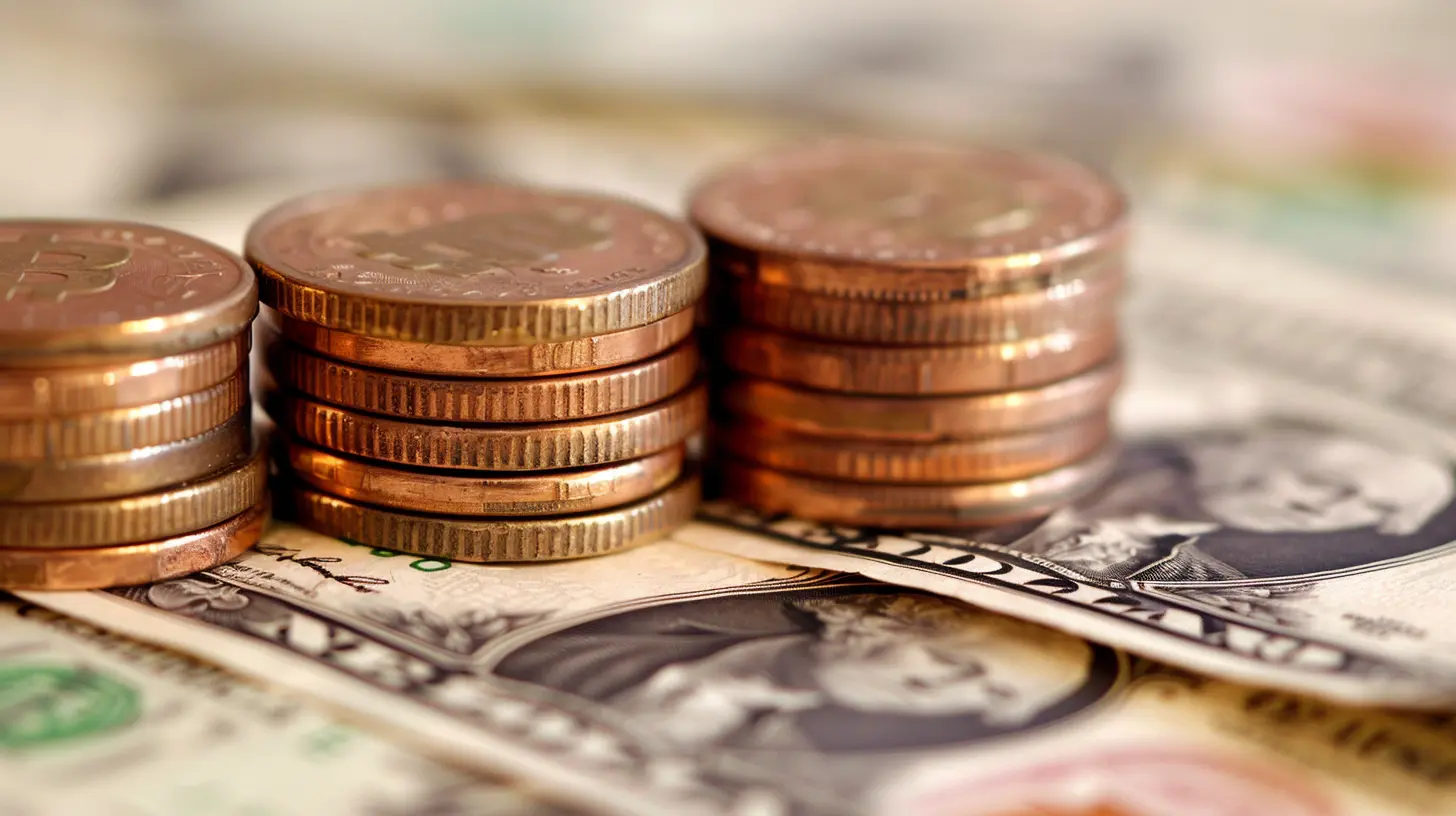Tips for Reducing Capital Gains Taxes on Investment Property
22 July 2025
Let’s be real—nobody likes paying taxes. But when it comes to capital gains taxes on investment property, the bite can feel especially painful. Selling a property you've held for a while can result in a huge tax bill if you're not careful. But don’t worry. With a little bit of planning, strategy, and creativity, you can significantly reduce the amount Uncle Sam takes from your hard-earned profit.
In this guide, we’re going to unpack the most effective, legal ways to reduce capital gains taxes on your investment property. Whether you’re a seasoned real estate investor or just sold your first rental, this article’s for you.
What Are Capital Gains Taxes, Anyway?
Before we dive into the tips, let's get on the same page.Capital gains taxes are the taxes you pay on the profit (the "gain") when you sell an investment, like real estate. The gain is the difference between what you paid for the property (your "basis") and what you sell it for.
There are two types of capital gains:
- Short-term: If you held the property for less than a year before selling, you pay ordinary income tax rates, which can be brutal.
- Long-term: If you held it for more than a year, you’re taxed at capital gains tax rates, which are typically lower—15% or 20% for most people.
But here’s the kicker: There are plenty of smart moves you can make to shrink (or even eliminate) that tax bill.
1. Hold the Property for Over One Year
This one’s simple, but powerful. The easiest way to pay less in capital gains taxes? Just hold your property for more than 12 months.Why? Because the tax rates drop a lot for long-term capital gains. If you sell within a year, your profit gets taxed at your regular income tax rate, which could be as high as 37%. Hold it a little longer, and you may only pay 15% or 20%.
It’s like waiting a little longer to open a bottle of aged wine—you get rewarded for patience.
2. Take Advantage of the 1031 Exchange
Heard of the 1031 Exchange? It’s like the ultimate "tax delay" move for real estate investors.Here's how it works: If you sell one investment property and use the proceeds to buy another "like-kind" property, you can defer paying capital gains taxes. Basically, you’re saying, "I’m reinvesting, not cashing out," and the IRS lets you off the hook for now.
Some rules to know:
- You need to identify the new property within 45 days of selling the old one.
- You must close on the new property within 180 days.
- The replacement must be equal or greater in value.
It’s like doing a real estate upgrade without ever stopping at the tax toll booth. Just keep rolling.
3. Offset Gains with Losses (Tax-Loss Harvesting)
This one's more of a loophole than a strategy: You can use your losing investments to cancel out the gains from your property sale.Let’s say you sold your rental and made $100,000 in profit. Oof, tax time, right? But let’s also say you sold some stocks during the year and lost $30,000. You can subtract those losses from your gains—meaning you only pay tax on $70,000.
You can even use up to $3,000 in capital losses to reduce your ordinary income, and carry over the rest to future years.
It’s like having a coupon for your taxes—one where your previous losses pay you back.
4. Make the Property Your Primary Residence
Now, this tip requires some life changes, but stick with me...If you convert your rental into your primary home, you can potentially exclude up to:
- $250,000 of capital gains from taxes if you're single,
- $500,000 if you're married and file jointly.
But there’s a catch—you must have lived in the home two out of the last five years before selling. It’s called the Section 121 Exclusion, and it’s one heck of a tax break.
Think of it as giving your investment property a new job title: “Home Sweet Home.”
5. Invest Through a Self-Directed IRA
Want to grow your profits tax-deferred or even tax-free? Enter the self-directed IRA.This strategy lets you buy and sell real estate within your IRA, and the gains are either:
- Tax-deferred for Traditional IRAs, or
- Tax-free for Roth IRAs.
Now, there are more rules to follow here than a high-stakes poker game:
- You can’t live in or personally benefit from the property.
- All expenses and income have to go in and out of the IRA.
So, this strategy is best for savvy investors who like playing the long game.
6. Keep Records of Improvements and Expenses
This is an easy one to forget—but it can save you tons of money.When you calculate your capital gain, you subtract your basis (what you paid) from your sale price. But here’s the trick: You can increase your basis by adding in the cost of capital improvements.
Did you add a new roof, remodel the kitchen, or install solar panels? Keep those receipts! They all count.
Also, don’t forget selling costs like:
- Real estate agent commissions,
- Title fees,
- Legal fees, and
- Other closing costs.
By raising your basis, you reduce your taxable gain. It’s like legally shrinking the size of your target.
7. Use Opportunity Zones for Tax Deferral or Elimination
This one’s a bit niche, but super powerful.The Opportunity Zone program encourages investment in designated low-income areas. If you roll profits from one property into an Opportunity Zone investment, you can:
- Defer capital gains taxes,
- Reduce the amount you owe over time, and
- Potentially eliminate taxes on future gains.
It’s a win-win: You help revitalize a community, and the government rewards you with tax breaks.
8. Gift the Property to Your Heirs or a Family Member
Thinking long-term? Gifting the property to someone in a lower tax bracket can reduce your combined tax burden.Even better, if you hold the property until your death, your heirs receive it with a stepped-up basis—meaning they only pay taxes on gains from the current value, not what you originally paid.
So if you bought a rental for $200K and it’s worth $600K when you die, your heirs' new tax basis is $600K. If they sell it right away? They pay little to no capital gains tax.
It’s like wiping the slate clean—with a tax eraser.
9. Donate the Property to a Charity
Feeling generous? Donating the property to a qualified charity can provide a double benefit:- You avoid paying capital gains taxes,
- AND you get a tax deduction for the property's fair market value.
If you've got a high-gain asset and a cause you care deeply about, this move is both generous and strategic.
10. Time the Sale Strategically
Last but not least—timing is everything.Your capital gains tax rate depends on your total income. So if you’re planning on retiring, or expect to earn less next year, waiting to sell could bump you into a lower tax bracket—and shrink your tax bill.
It’s like choosing the best year to cash in your chips. Wait for the right moment, and you'll keep more of your winnings.
Final Thoughts
Paying taxes is part of the game in real estate investing—but paying more than you need to? That’s just bad strategy.By being smart about how and when you sell your investment property, you can keep more of your profits in your pocket. Whether it's using a 1031 exchange to defer taxes, turning the property into your home, or keeping meticulous records of your costs, there’s a tax-saving tactic for everyone.
Just remember—it’s always a good idea to talk to a tax professional before making big moves. What works for someone else might not work for you. The best approach is personal, strategic, and 100% legal.
After all, why give Uncle Sam more than you have to?
all images in this post were generated using AI tools
Category:
Capital GainsAuthor:

Knight Barrett
Discussion
rate this article
1 comments
Yvonne McMeekin
Strategic planning today can lead to significant savings tomorrow.
August 7, 2025 at 3:38 AM

Knight Barrett
Absolutely! Effective strategic planning not only helps optimize tax liabilities but also maximizes long-term savings on investments.


